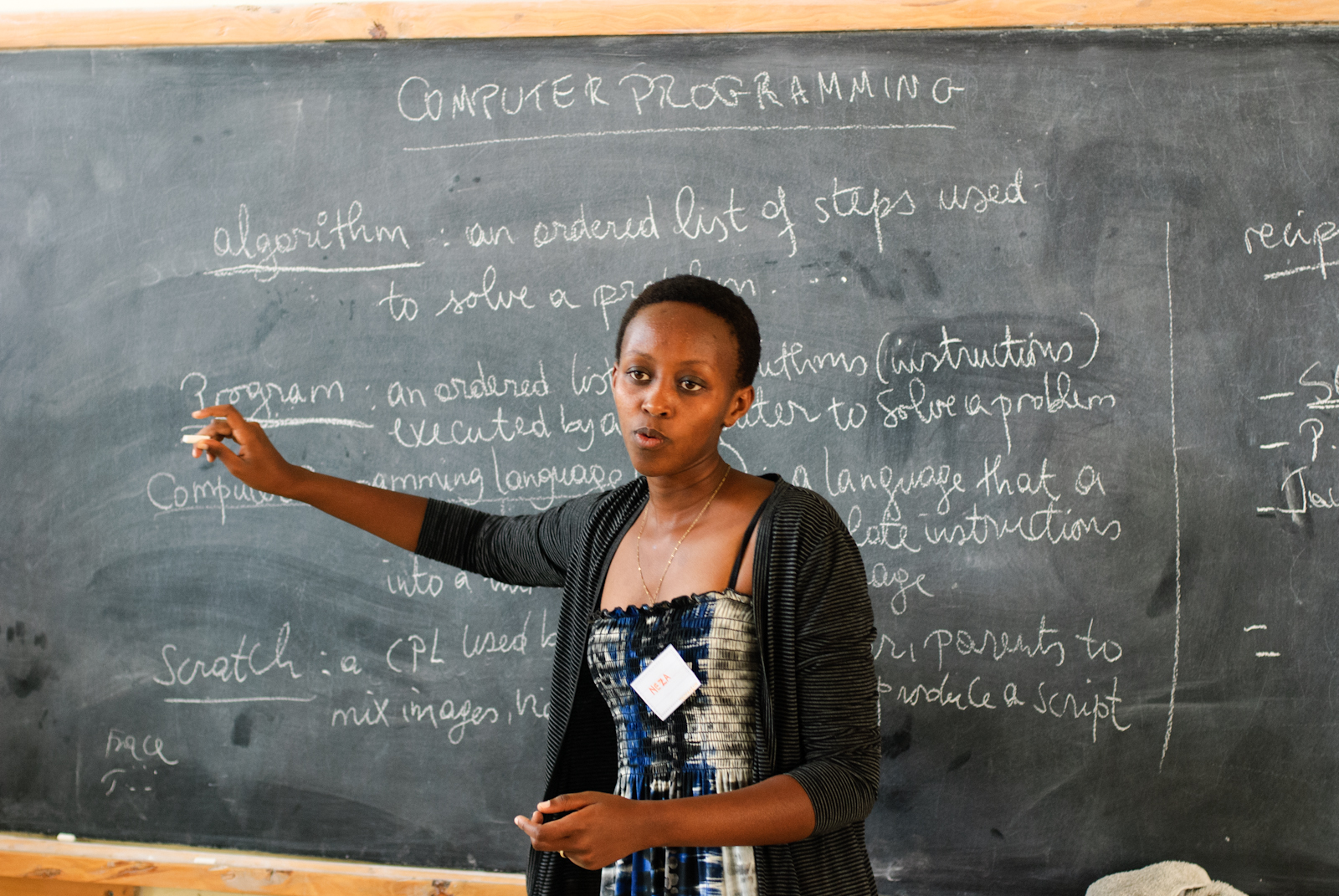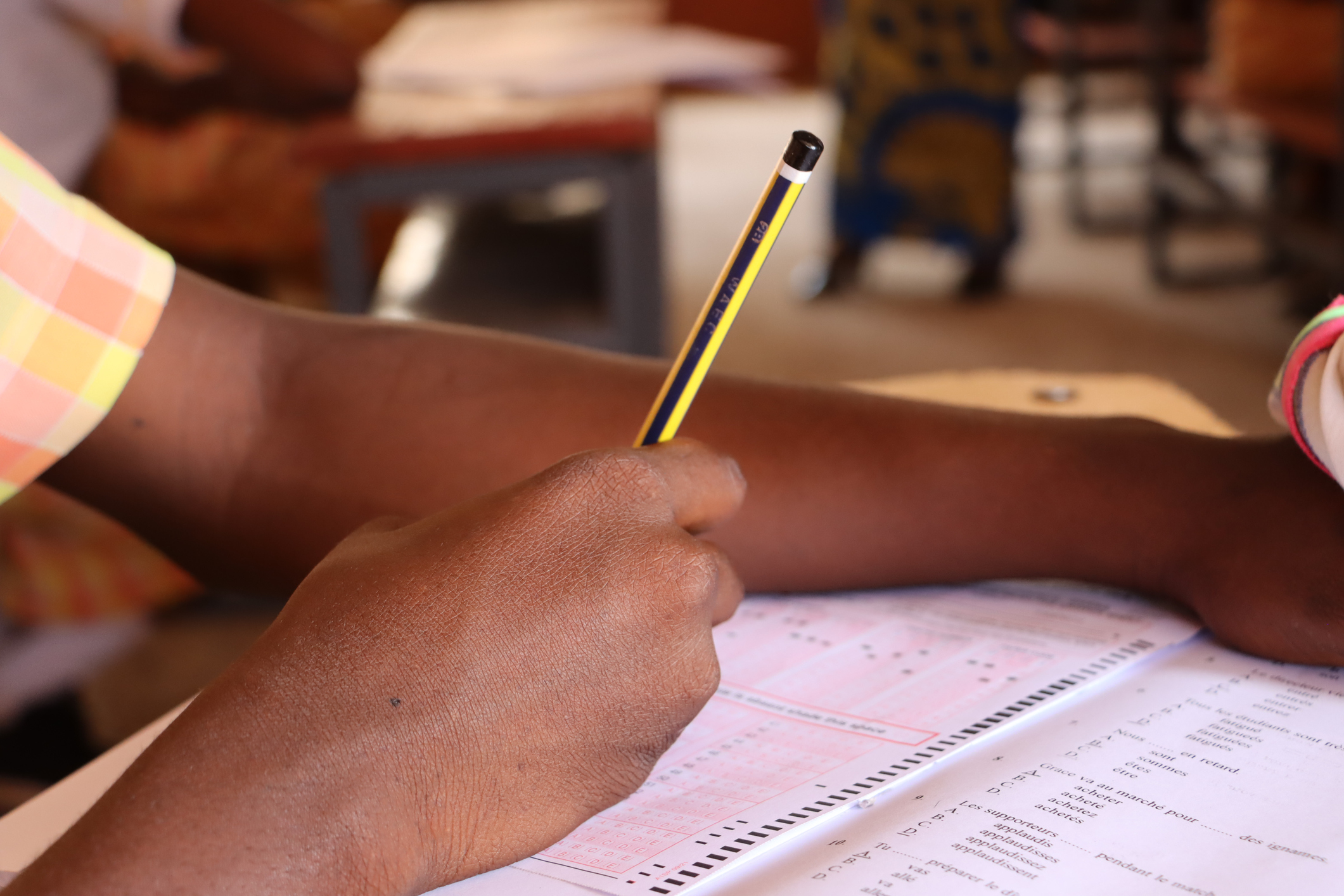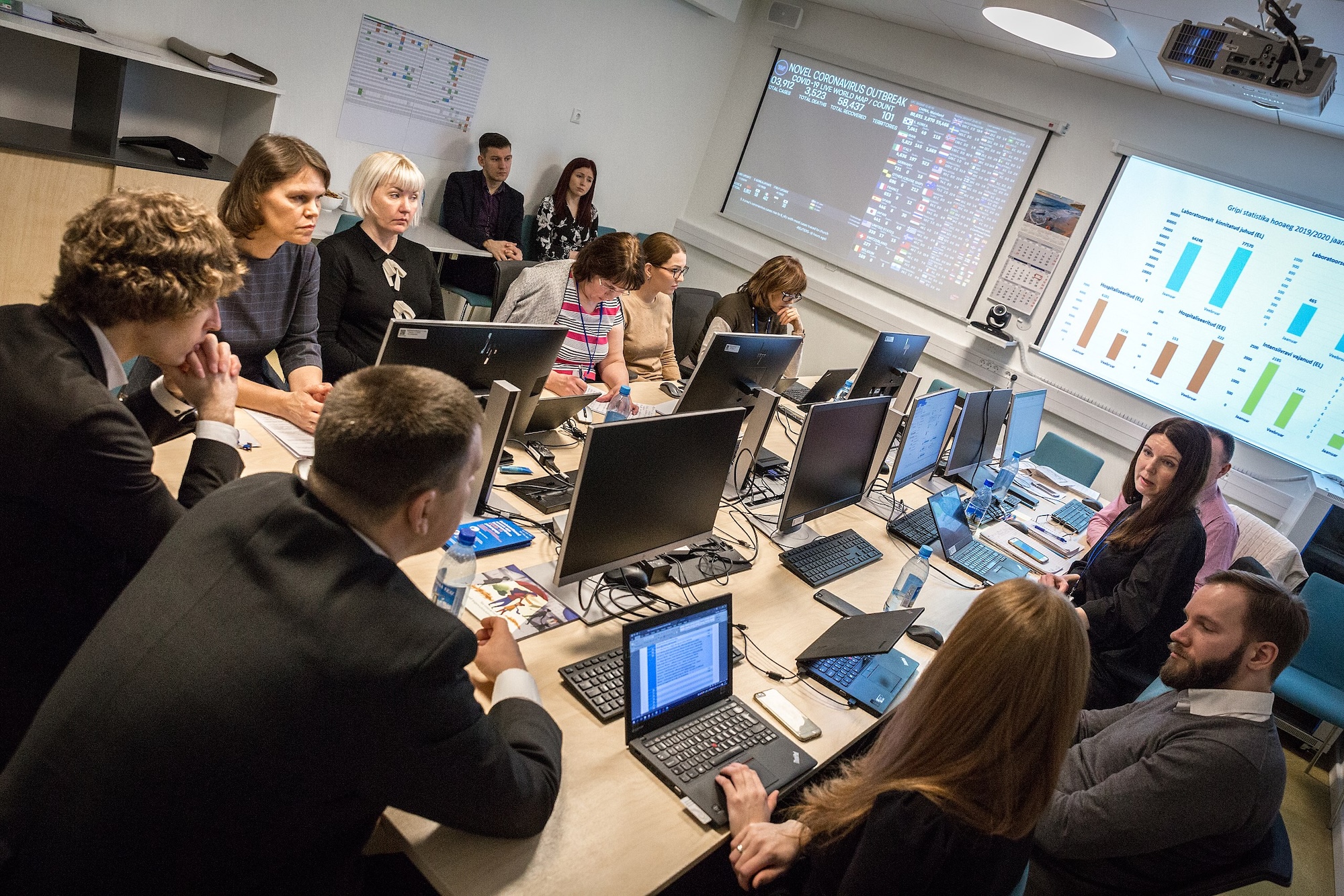Our resources thrust participants into the heart of real-world scenarios, from crisis management in the UK during the Covid-19 pandemic to cross-party education reform in Brazil.
Many of our resources are available on The Case Centre distribution platform. Educators who are registered with the site can access free review copies of our case studies, teaching notes, and other materials.
To inquire about our other cases or background materials, please contact us at casecentre@bsg.ox.ac.uk.
Chips and chokepoints: export controls for Japan’s semiconductor industry
In the 2020s, Japan was making major investments in its semiconductor industry as tensions grew between the US, its major security ally, and China, its largest economic partner. Washington pressured Tokyo to align with US export controls intended to prevent China from accessing advanced chips and the equipment needed to make them. Tokyo, worried about losing access to the Chinese market and potential economic retaliation, had to weigh up the risks of tightening its export controls or resisting US pressure.
In the 2020s, the Japanese government was taking major steps to revitalise its semiconductor industry. But this renewed investment came amidst a changing geopolitical landscape, marked by growing tensions between the US, Japan’s major security ally, and China, Japan’s largest economic partner. Alleging that China was using advanced US chips to modernise its military, the US implemented wide-sweeping export controls to prevent China from accessing advanced chips and the equipment needed to make them. The US wanted Japan to align with its export controls to make them more effective and, after nearly a year of talks, Japan introduced a limited set of export controls in 2023, though it did not name China as the target. China responded by circumventing restrictions and redoubling efforts to build domestic capacity.
Then, in late 2024, the US pressured Japan to tighten restrictions even further, including for some equipment and chemicals of which Japan was the leading producer. Japan worried about the potential impact on Japanese businesses, as well as retaliation from China, and had to weigh up the short-term and long-term consequences of tightening restrictions or resisting US pressure.
- Examine how governments manage the opportunities and vulnerabilities of economic interdependence
- Deepen understanding of economic security, including concepts such as weaponised interdependence and state-business relations
Enough already? Implementing evidence-based policy in the Rwandan education sector
Bernard Bahati was leading a task force looking at ways to reform Rwanda’s teachers’ performance contracts to tackle the country’s learning crisis. The team was running an adaptive trial to see if the significant learning gains from the pilot could be replicated at scale when implemented by the government. However, six months into the tria,l a new minister arrived who wanted to scale-up immediately. Caught between political pressure to act quickly and researchers urging caution, Bahati faced a critical decision.
By the 2020s, Rwanda faced a learning crisis: while almost all children were in school, learning outcomes remained poor. Determined to improve education quality, the government had prioritised education in its national budget. Now, the Ministry of Education was under pressure to deliver. For the past year, Dr. Bernard Bahati had led a task force to reform teachers’ performance contracts and explore whether incentives could be linked directly to student learning. The team launched an adaptive trial of a promising pay-for-performance model, previously successful in a smaller pilot, to test its effectiveness at scale.
However, six months into the trial, a new minister was appointed. Although some early signs were encouraging, the results were still preliminary, with no statistically significant gains in learning – and implementation had proven difficult. Despite these concerns, the new minister, eager to address the crisis, pushed to roll out the performance contracts nationwide within the year. Caught between political pressure to act quickly and researchers urging caution, Bahati faced a critical decision: whether to scale an unproven program in hopes of immediate impact, or to delay and risk losing momentum and political support.
- Evaluate a body of evidence and explore the trade-offs involved in designing and implementing evidence-based policy;
- Identify key stakeholders and consider how they may view these trade-offs differently;
- Understand the concept of the ‘voltage drop’ in moving from a seemingly successful ‘proof of concept’ to an effective policy implemented at scale using government systems and consider ways to mitigate this through A/B testing;
- Exercise the use of judgement in balancing the ‘politics, logistics, and statistics’ involved in evidence-based policy-making;
- Understand the concept of the learning crisis, explore reasons for this crisis; and consider evidence-based options for addressing this crisis.
COMING SOON – Bridging the gap: Negotiating health access in Bahia, Brazil
Can four rival mayors overcome politics, competing interests, and scarce resources to transform healthcare in Bahia, Brazil? For years, the region has struggled to provide medium-complexity care. To address this, the state has introduced regional polyclinics managed by voluntary consortia of mayors and the state government. In this multi-issue, multi-party negotiation role-play, four municipalities and the state must decide whether to form a consortium. Success could improve health outcomes, but contrasting politics, priorities, and resources could stand in the way.
Coming Soon: 1 Jan 2026
Can four rival mayors overcome politics, competing interests, and scarce resources to transform healthcare in Bahia, Brazil? This multi-issue, multi-party negotiation role-play puts participants into the heart of one Brazilian state’s ambitious health regionalisation agenda. For years, medium-complexity care such as CT scans and specialist consultations had been concentrated in the state capital, creating deep disparities in access, with rural patients often delaying or missing vital care. To close this gap, the state introduced regional polyclinics managed by consortia of mayors and the state government. Participation, however, is completely voluntary, and a few regions have yet to join.
This simulation focuses on one of these regions, Ventura. In Ventura (fictionalised for teaching purposes), four municipalities must decide if they will at last form a consortium, and, if so, what health services to offer. Participants role-play as mayors and state representatives negotiating the terms of the collaboration. The stakes are high: success promises improved health outcomes and potentially reduced costs for the region, but, with politics, priorities, and resources varying widely between municipalities, each party is striving to achieve the best outcome for their own constituents.
Coming Soon: 1 Jan 2026
- Practice and reflect upon key negotiation moves and skills;
- Identify and balance social and political value in a complex public-sector negotiation;
- Manage the tension between achieving a shared common goal and competing individual interests; and
- Navigate a highly technical negotiation while maintain focus on strategic objectives.
COMING SOON – Tackling adult social care in England
In autumn 2022, in the midst of economic turmoil, the UK government had to decide whether to follow through with a long-planned major reform of the crisis-shaken English adult social care sector or delay its implementation, hoping the government’s financial situation would stabilise. With budgets in dire straits, local councils called for a delay, while advocacy groups like Age UK urged immediate action, warning not to kick the decision into the long grass, like successive governments had before them.
Coming soon
In the autumn of 2022, the UK government faced critical decisions regarding adult social care reform in England. The adult social care sector was under severe strain, with record-high staff vacancies, financial instability among care providers, and growing demand for services. Meanwhile, the NHS was also stretched, with hospital discharges delayed due to limited social care capacity. A long-promised reform to cap lifetime care costs, based on the 2011 Dilnot Commission’s recommendations with an aim of preventing catastrophic care costs, was set to be implemented in 2023. But in November 2022, economic pressures – exacerbated by post-Covid-19 challenges and recent market instability – meant the Treasury was reassessing its £3.6 billion funding commitment for the policy reform amidst wider budget cuts. Local councils called for a delay given their difficult financial position, while advocacy groups like Age UK, which represented older people, urged immediate action, warning not to kick the decision into the long grass, like successive governments had before them. The Treasury, the office of Prime Minister Rishi Sunak, and the Department of Health and Social Care had to decide what to do.
Coming soon
- Understand how England’s adult social care system is structured and funded, and diagnose areas that require reform;
- Consider different policy solutions and analyse their technical and political trade-offs;
- Identify barriers public leaders face in implementing and sustaining long-term reform
COMING SOON – Lessons of language: selecting a medium of instruction for Ghana’s primary schools
In 2018, Minister of Education Matthew Prempeh was reconsidering the language of instruction (LOI) policy for primary schools in Ghana, a country with more than 80 local languages and English as the national language. Prempeh saw many challenges to implementing the current LOI policy, where Grades 1 through 3 were taught in one of 11 select Ghanaian languages, and Grade 4 onwards taught in English. He considered the options: what LOI policy would best prepare students for a global society?
Coming soon
In 2018, Ghana’s Minister of Education Matthew Prempeh was reconsidering the language of instruction (LOI) policy for primary schools. In a country with more than 80 local languages yet a national language of English, the LOI policy stated that Grades 1 through 3 should be taught in one of 11 select Ghanaian languages, with Grade 4 onwards taught in English. While international evidence showed that students learnt critical skills best when taught in their first language, Prempeh saw many implementation challenges to the existing LOI policy, such as providing teaching materials in the 11 different languages. Moreover, Prempeh viewed English as a global language that could unlock opportunities. Should he improve the implementation of the current LOI policy, introduce English earlier, or move to English-only instruction altogether?
Coming soon
- Examine how demands of utility can or should be balanced against concerns over socio-cultural wellbeing;
- Consider policy options that ensure equality and improve education outcomes for children in a multilingual country;
- Explore approaches for designing enduring policy reform
Survival and security in Ukraine
It is January 2025, and Ukraine is facing a military threat to its survival from Russia. While a stalemate has fallen on the battlefield, the political landscape is shifting. A new US administration has entered office with a dramatically different policy towards Ukraine, potentially forcing Ukraine to reconsider what peace might mean. In this new geopolitical world, how could Ukraine best ensure security in the short- and long-term?
It is January 2025, and Ukraine is facing a military threat to its survival from Russia. Almost three years have passed since Russia had marched on Kyiv and more than 10 years since Russia occupied Crimea. While a stalemate has fallen on the battlefield, the political landscape is shifting. For years, the Russian government has been demanding that Ukraine give up claims to the Russian-occupied regions, and recognise them as part of Russia, as well as halting any attempt to join NATO – demands which have long been rejected by Ukrainians. Yet, the war has taken a heavy toll on Ukraine and a new US administration has entered office with a dramatic shift in policy towards Ukraine, potentially forcing Ukraine to reconsider its position. With it seeming increasingly likely that Ukraine will soon be handed terms of a ceasefire agreed between Russia and US, how could the country ensure that it responded in such a way that would best protect its security in short- and long-term?
In this case study, participants consider how to prepare President Zelenskyy for a potential ceasefire deal over a 90-minute discussion-based class.
- Understand ‘the anarchy problem’ in international relations and analyse the forms of political order at the global level that have emerged in response to anarchy;
- Recognise the ‘security dilemma’ that states face as a result of the anarchy problem and consider the various responses they have developed to avoid armed conflict and further global security;
- Apply theories around international relations and security to a specific context and weigh up strategies to further national security aims within that context.
Fighting for women’s representation in Sierra Leone
For decades, Sierra Leone’s women’s movement had advocated for a quota for women in decision-making positions. But despite promises from successive governments to heed these calls, no quota had been implemented. By 2021, only 12% of parliamentarians were women. Minister of Gender and Children’s Affairs Manty Tarawalli was now attempting to pass a quota for women to boost representation. The bill had been part of her party's election manifesto yet faced resistance in parliament. How could Tarawalli find a majority?
In August 2021, Manty Tarawalli, Sierra Leone’s Minister of Gender and Children’s affairs, was trying to convince members of Sierra Leone’s hung parliament to vote for her ministry’s signature Gender Empowerment bill. The bill featured a 30% quota for women in parliament, public bodies, and private companies and had been received coldly by many representatives from Sierra Leone’s major parties.
The proposal followed decades of campaigning by Sierra Leone’s women’s movement, years of intense debate, and repeated promises by successive governments. But even though the bill was based on the government’s election manifesto, conversations with stakeholders, and a detailed policy paper, parliamentarians still asked her to conduct yet another round of national consultations. It was clear to her that the bill and the 30% quota were on the verge of being rejected: ‘Go out, go and do consultations. That is one way of derailing something’, Tarawalli remembered. As Tarawalli gathered herself, she had to consider her next steps. How could she overcome the resistance and usher the bill through parliament? Which negotiation strategies could she use to break the impasse?
- Analyse position of actors and power dynamics in multi-party negotiations;
- Understand the importance of mass mobilisation, alliances, and internal unity;
- Explore negotiation strategies and policy framing when pushed to the margins
Can the WTO help solve the COVID-19 vaccine crisis?
It is July 2021, and, in the midst of the Covid-19 pandemic, access to vaccines is highly uneven around the globe. In this multi-issue, multi-party negotiation role play, participants representing governments from the Global North and Global South, as well as pharmaceutical companies and manufacturers, must work together to solve this issue. And although all parties share a common interest in seeing vaccination rates rise globally, individual and national interests diverge and finding an agreement is extremely challenging.
It is July 2021 and more than four million people across the world have lost their lives to Covid-19. With the pandemic still raging, mass vaccination programmes have been rolled out in many countries as one essential strategy to combat the virus. However, access to vaccines is highly uneven around the globe: while rich countries have vaccinated large proportions of their populations, some low-income countries have vaccination rates of under 1%.
In this multi-issue, multi-party negotiation role play, participants representing governments from the Global North, governments from the Global South, and pharmaceutical companies and manufacturers must work together to improve access to vaccinations. And although all parties share a common interest in seeing vaccination rates rise globally, individual and national interests diverge and finding an agreement on the best route to achieve the desired goal is extremely challenging. In the negotiation, participants must navigate shifting alliances and competing interests and must, fundamentally, develop an understanding of how to negotiate for the public good.
- Practice and reflect upon key negotiation moves, skills and potential obstacles in a multi-party, multi-issue complex negotiation;
- Explore and experience themes related to negotiating in the public interest.
Making it last: Striking black gold in Guyana
A recent large oil discovery had the potential to make Guyana one of the world's richest countries on a GDP per-capital basis. However, the low-lying nation was particularly vulnerable to climate change and rising sea levels. This mini case study puts participants in the shoes of President Mohamed Irfaan Ali in 2024 as he navigates the political, economic, and environmental issues raised by the oil discovery.
Guyana in 2024 was a country on the cusp of a major transformation. The world’s largest non-state oil company, ExxonMobil, had discovered sizeable oil fields off the coast of Guyana in 2015. The discovery had the potential to make Guyana one of the world’s richest nations on a GDP per-capita basis. The country’s president, Mohamed Irfaan Ali, in office since 2020, believed the oil could be ‘an important tool … in the building of a prosperous Guyana and a sustainable Guyana.’
But the discovery of oil also raised a host of political, economic, and environmental questions. This mini case study is set as Ali’s first term in office was drawing to a close. Ali needed to determine how to navigate the oil opportunity with a view towards the long-term interests of the Guyanese people and the planet, whilst also managing voters’ shorter-term expectations.
- Consider how environmental, political, and economic concerns interact when considering the short- and long-term interests of a nation;
- Explore challenges and opportunities related to new natural resource discoveries
Digital vaccine registration in Estonia
On 11 May 2021, Estonia’s Ministry of Social Affairs unexpectedly announced that Covid-19 vaccinations would be opened to all Estonians over 16 years old – 500,000 people – in just one week’s time. Estonia’s Chief Information Officer (CIO) Siim Sikkut worried that this large influx of users would crash the repurposed digital health portal. However, he did not have direct authority over the digital decisions of the social affairs ministry. What, if anything, could he do to prevent a crash?
Even though Estonia was well known as a leader in digital public services, some government departments had been less successful than others in their digitalisation efforts. In particular, the social insurance board had struggled to get their digital platform for social protection benefits off the ground: between 2017 and 2022, the project had eaten up €23 million and achieved only a quarter of its intended goals.
This case study centres around the decision of whether to discontinue or try to salvage an unsuccessful digitalisation project. By analysing the social insurance board’s challenges to digitalisation, the case will be used to evaluate factors that contribute to unsuccessful digitalisation efforts, and in doing so, identify how governments can build up the skills to successfully digitalise.
- Understand the dynamics between central-coordinating agencies and policy-implementing agencies;
- Explore the operational details, challenges and risks of digital transformation in government.











